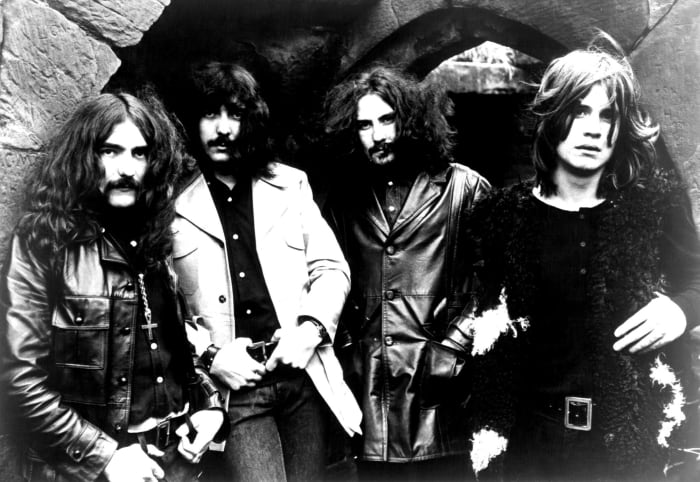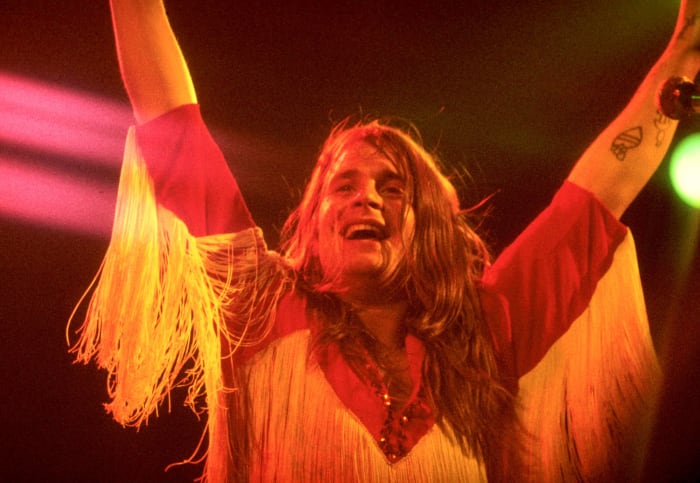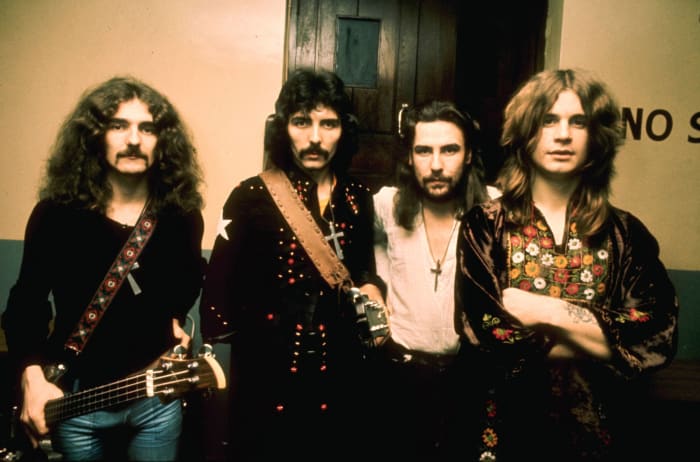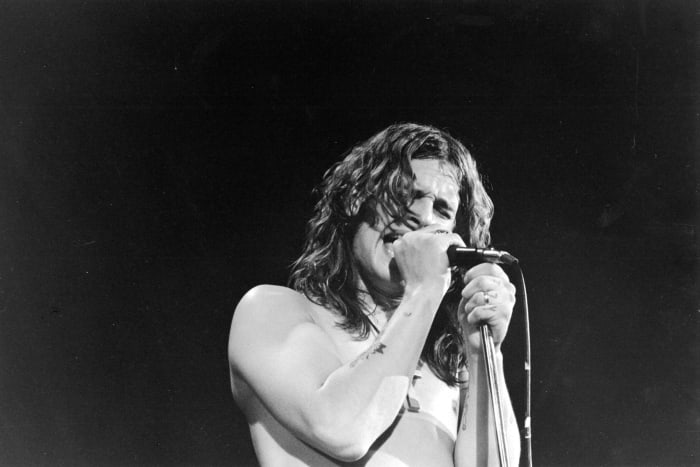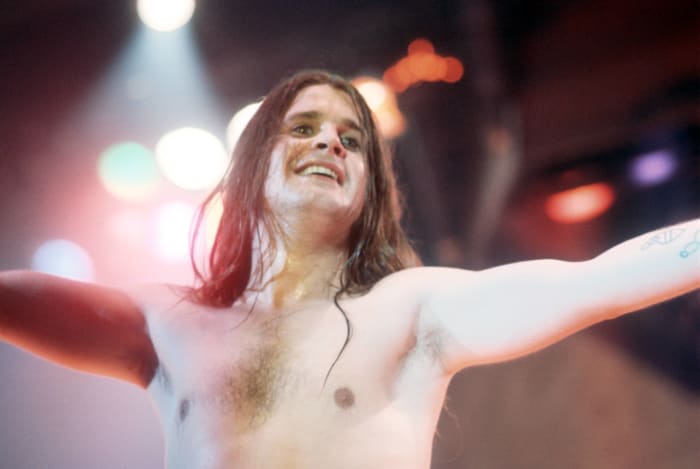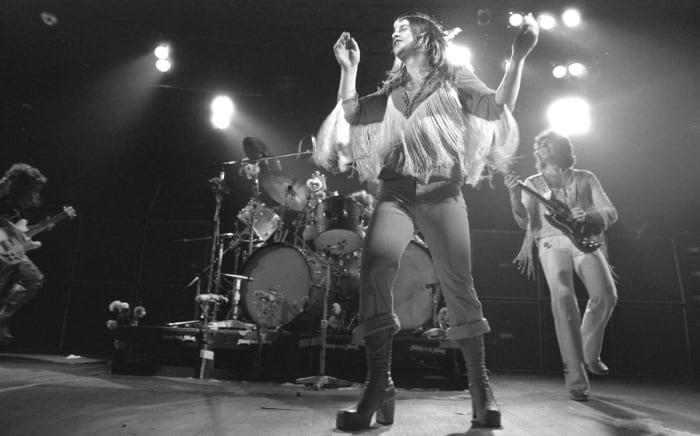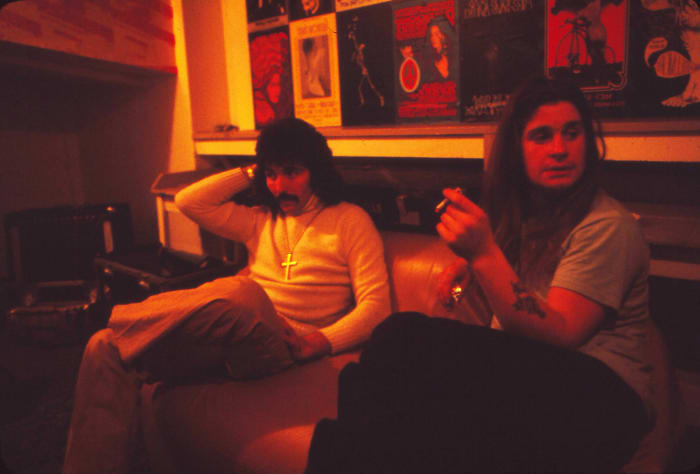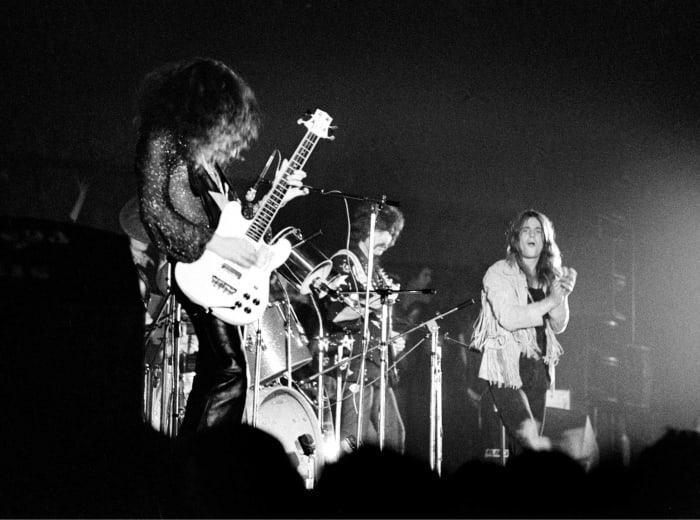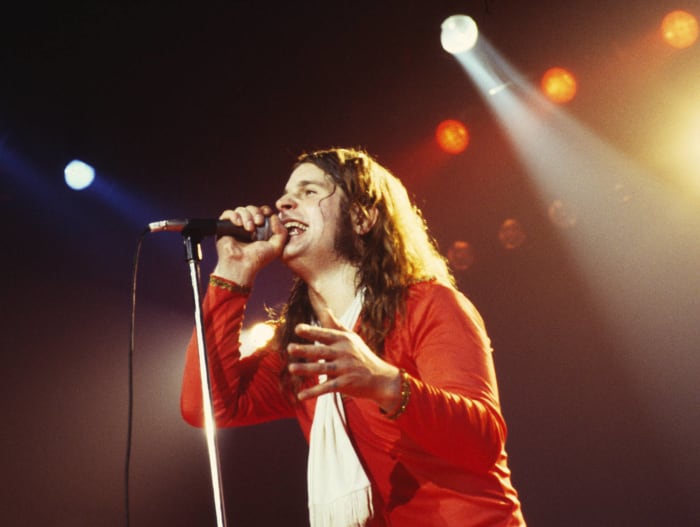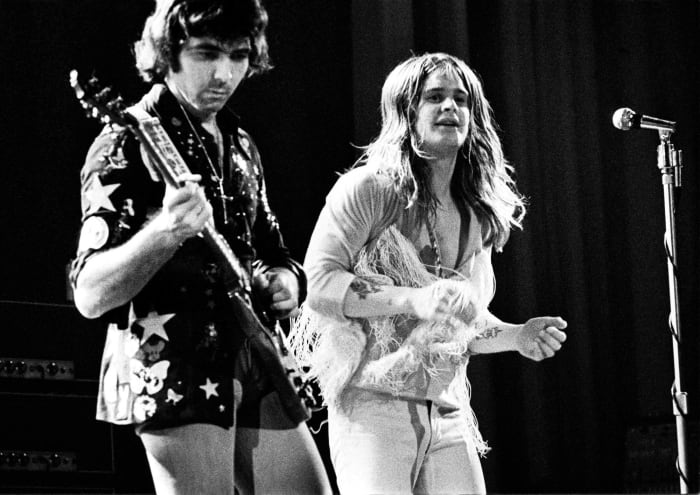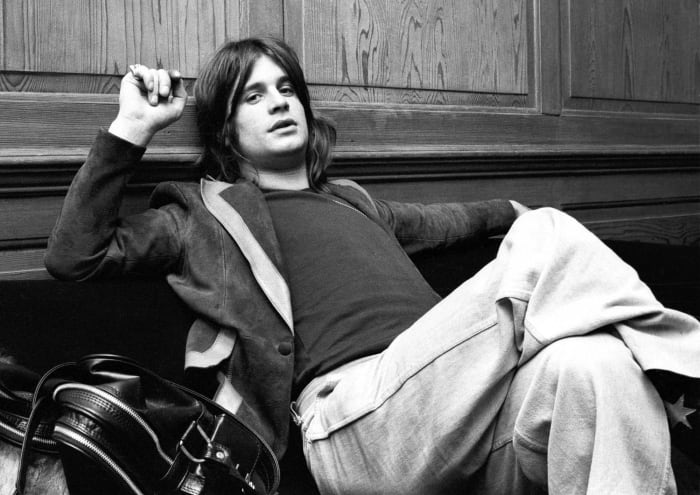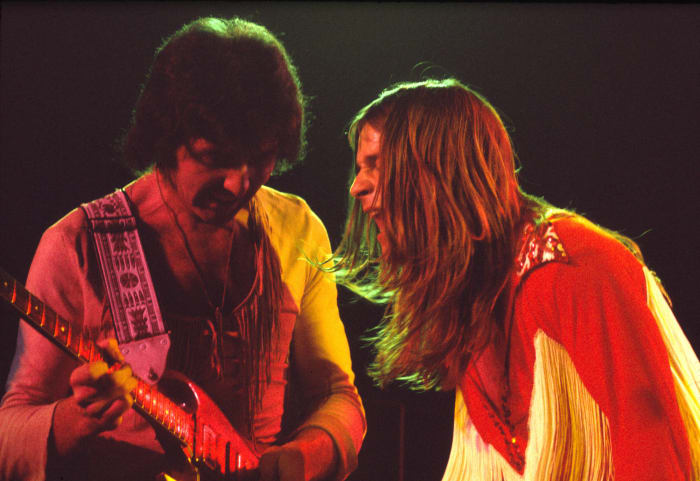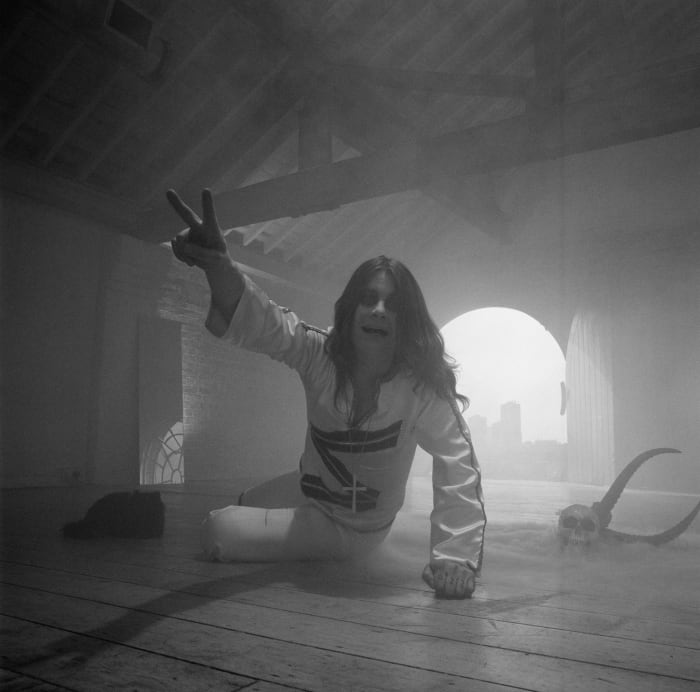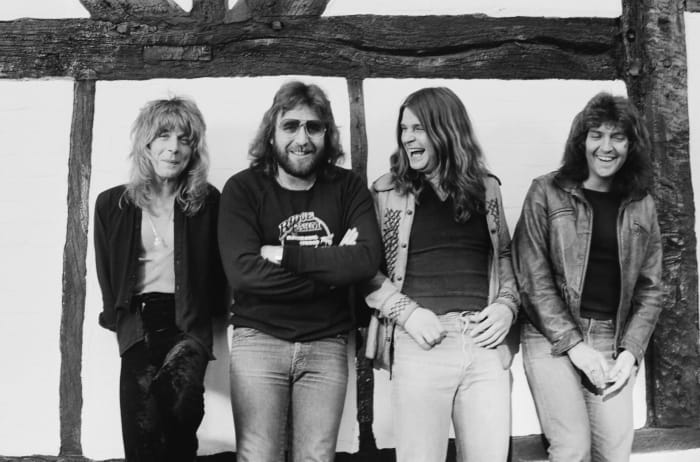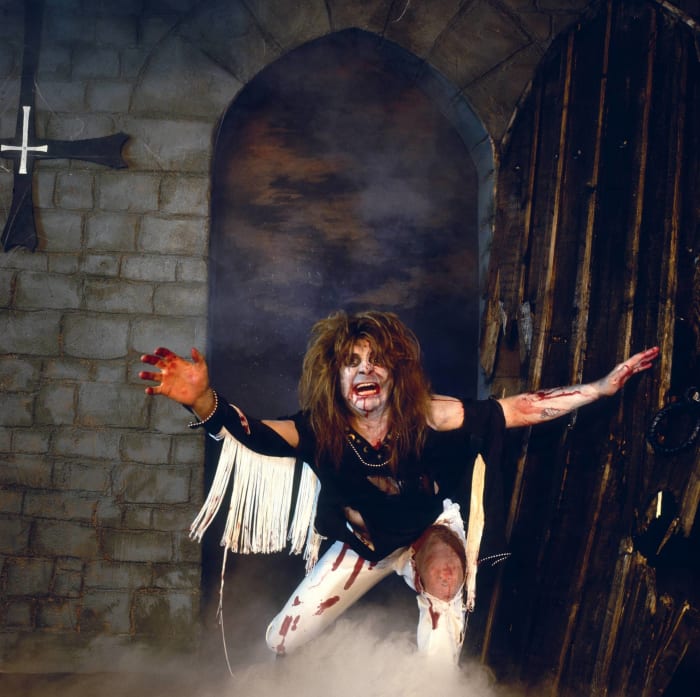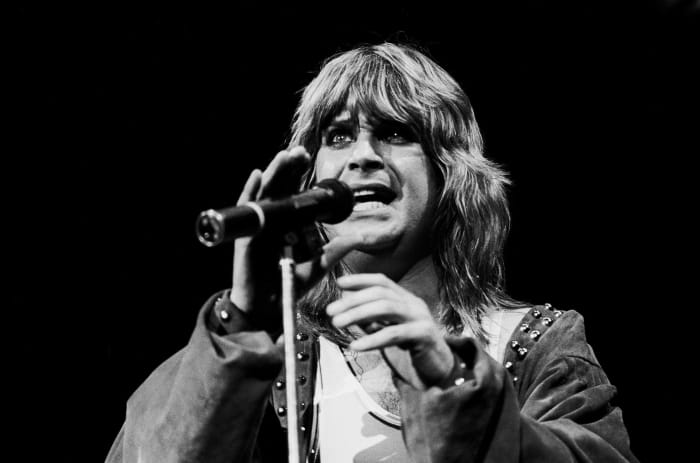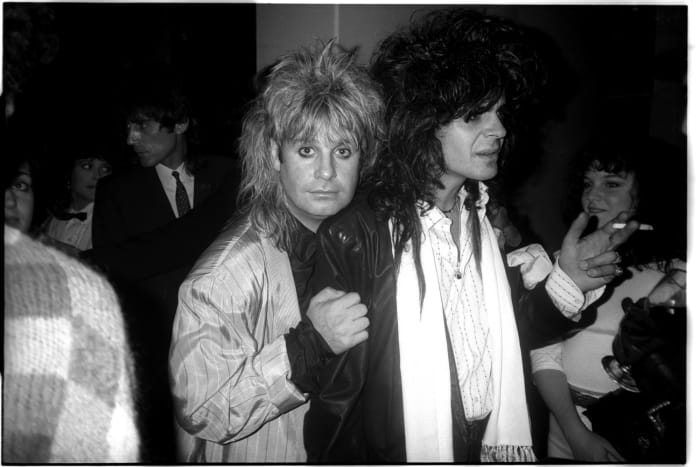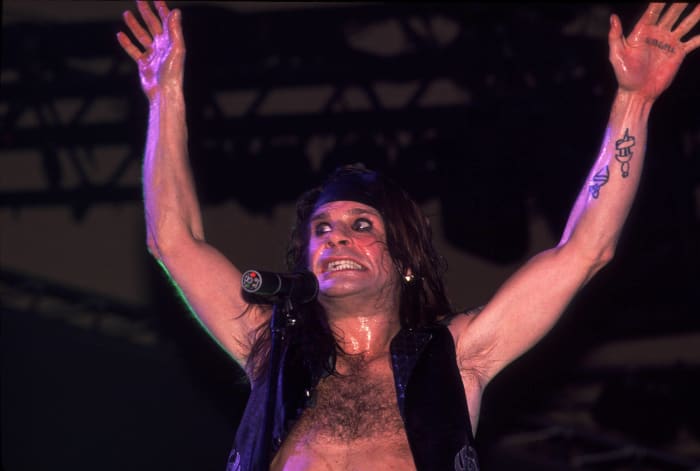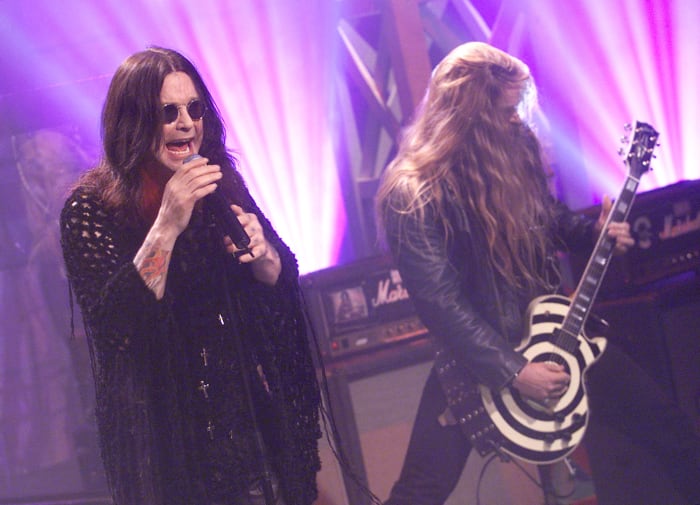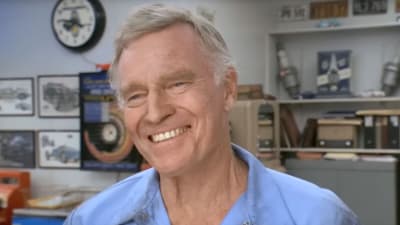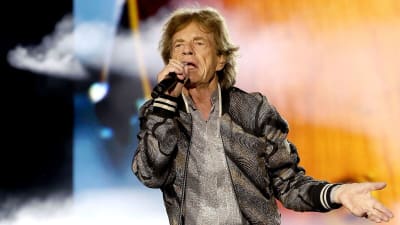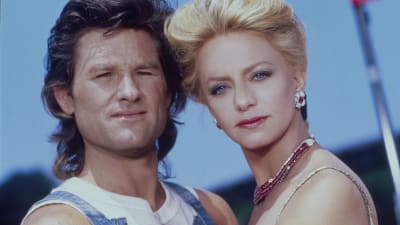On April 27, 2018, heavy metal legend Ozzy Osbourne will embark on what is supposedly his last-ever world tour, somewhat humorously named “No More Tours 2.” (He previously hit the road on the first “No More Tours” tour all the way back in 1992.) To celebrate this occasion, and the nearly 50 years of music provided by the Prince of Darkness, we decided to compile a slideshow highlighting songs that represent the best of Ozzy’s career. Grab your rubber bat, throw on some eyeliner and get ready to headbang because this is the ultimate Ozzy Osbourne playlist.
1 of 25
“Black Sabbath” (1970)
Michael Ochs Archives/Getty Images
A cover of Crow’s “Evil Woman” was Black Sabbath’s first single, but a better representation of — and introduction to — Black Sabbath is the song “Black Sabbath” on the album “Black Sabbath.” Not only is it the first song on the band’s first album, but it starts out with the sounds of a brewing thunderstorm before launching into the face-meltingly heavy tritone of Tony Iommi’s distorted electric guitar, Geezer Butler’s bass and Bill Ward’s drums paired with the disturbed and distressed vocals of Mr. Ozzy Osbourne. The song eventually picks up and showcases both the range and skill of the historic heavy metal quartet.
Chris Walter/WireImage/Getty Images
After Geezer Butler’s buzzing bass kicks off “N.I.B.,” Ozzy launches into a first-person tale of the devil as told by the evil one himself, including the lyrics: “Look into my eyes, you'll see who I am / My name is Lucifer, please take my hand.” At the time of the song’s 1970 release, it didn’t get much more metal than this.
3 of 25
“War Pigs” (1970)
Chris Walter/WireImage/Getty Images
Although it was never released as a single, “War Pigs” is still considered one of the most iconic songs in Black Sabbath’s catalog and one of the greatest songs in heavy metal history. The opening line “Generals gathered in the masses / Just like witches at black masses” perfectly sums up the eight-minute epic, which is both an anti-war anthem and an ode to the holiday of Walpurgis, or “Witches’ Night.”
4 of 25
“Paranoid” (1970)
Michael Ochs Archives/Getty Images
While “War Pigs” (the first song off Black Sabbath’s second studio album, “Paranoid”) focused mostly on Iommi’s guitar prowess, “Paranoid” (the second track) features Ozzy slinging rapid-fire verses in a fast-paced, short and sweet song that was actually added to the album as filler. In fact, the song was written and recorded so quickly that Ozzy was actually reading the lyrics as he sang them. “Paranoid” has since become a classic Black Sabbath tune, and its popularity in Finland has reached the level of Lynyrd Skynyrd’s “Free Bird.” Fans at any live concert in any genre will often humorously shout out “Soittakaa ‘Paranoid!’” (“Play ‘Paranoid!’”) during shows.
5 of 25
“Iron Man” (1970)
Michael Ochs Archives/Getty Images
Even folks who aren’t fans of Black Sabbath know the song “Iron Man,” especially it’s opening riff. And Ozzy wasn’t just the vocalist on the track, he also inspired the entire premise. Upon hearing Iommi’s guitar part, Osbourne remarked that it sounded “like a big iron bloke walking about.” The song was dubbed “Iron Man,” and Geezer Butler wrote the lyrics around this theme.
Specifically, the song tells the tale of a man who travels into the future, witnesses the apocalypse and returns to the present to warn of impending doom. No one believe his story, causing him to seek revenge and, in turn, cause the exact destruction he was attempting to prevent.
6 of 25
“Fairies Wear Boots” (1971)
Michael Ochs Archives/Getty Images
The inspiration for “Fairies Wear Boots” is still debated to this day but, to us, it doesn’t really matter. The song is six minutes of organized chaos punctuated by numerous lengthy instrumental sequences seamlessly tied together by Ozzy’s vocal contributions. And like many Sabbath songs, this one is even better live.
7 of 25
“Children of the Grave” (1971)
Chris Walter/WireImage/Getty Images
From Sabbath’s third record, “Master of Reality,” comes “Children of the Grave,” a personal favorite of Ozzy Osbourne. Even during solo shows, Ozzy would often play this anti-war song that essentially picks up where “War Pigs” left off.
8 of 25
“Sweet Leaf” (1971)
Randy Bachman/Getty Images
If the title “Sweet Leaf” doesn’t make the subject matter of the song immediately apparent, the looping introductory sound bite of Tony Iommi coughing will. The band has admitted this ditty is an ode to marijuana with Ozzy confessing his undying love for the plant in each line of the lyrics. “Sweet Leaf” is one of Black Sabbath’s most popular songs with the guitar part even getting sampled for the Beastie Boys’ “Rhymin & Stealin.”
9 of 25
“Into the Void” (1971)
Chris Walter/WireImage/Getty Images
As far as fan favorites go, few songs can complete with “Into the Void” from “Master of Reality.” It has been covered by Kyuss, Monster Magnet, Sleep and Soundgarden and has been named as a favorite of Eddie Van Halen and Metallica’s James Hetfield, among others.
10 of 25
“Snowblind” (1972)
Gijsbert Hanekroot/Redferns/Getty Images
If we only picked one song to represent Black Sabbath’s “Vol. 4,” it would be “Snowblind.” During the recording in May 1972, the band was members were all heavily into cocaine, and the track is an obvious references to this. In fact, the album was almost called “Snowblind,” but record executives shot the idea down.
11 of 25
“Supernaut” (1972)
Chris Walter/WireImage/Getty Images
“Snowblind” is probably the most popular song on “Vol. 4,” but the most respected might be “Supernaut.” Frank Zappa, John Bonham and Beck have all praised the song as one of their favorites, Ministry recorded a cover for one of their albums and, at live shows, this was often Bill Ward’s choice when performing an extended drum solo.
12 of 25
“Sabbath Bloody Sabbath” (1973)
Ian Dickson/Redferns/Getty Images
Black Sabbath’s fifth studio album, “Sabbath Bloody Sabbath,” only yielded one single, and it was a doozy. The title track sees Ozzy really letting his vocal range fly in the second half of the song, while Tony Iommi crushes his way through a monstrously heavy riff. Years ago, Slash from Guns N’ Roses said of the song’s outro: “To this day, I haven't heard anything as heavy that has as much soul.”
13 of 25
“Symptom of the Universe” (1975)
Ian Dickson/Redferns/Getty Images
The real standout of Sabbath’s sixth album, “Sabotage,” is “Symptom of a Universe,” a fast-paced single that some refer to as one of the earliest thrash metal songs. Ozzy wails out the Geezer Butler-penned lyrics, Iommi shoots notes out of his guitar like a machine gun and Bill Ward really lets loose on his kit for four solid minutes before the track suddenly turns into an entirely different song. The last two minutes are composed of an acoustic jam session that was improvised in a single day.
14 of 25
“Hole in the Sky” (1975)
Chris Walter/WireImage/Getty Images
While “Sabotage” also yielded the single “Am I Going Insane (Radio),” Ozzy has referred to that song and “Supertzar” as distractions from an otherwise great album — and, to be honest, we’ve also never been big fans of either song. Instead, we’d rather listen to the B-side of the “Am I Going Insane (Radio)" single, “Hole in the Sky,” mostly because we love hearing Ozzy go all out to nail the chorus.
15 of 25
“Never Say Die!” (1978)
Peter Still/Redferns/Getty Images
Ironically, “Never Say Die!” is the last Black Sabbath song we’re including in this list, but the name was actually somewhat intentional, as the band knew their days with Ozzy as the frontman were numbered. Although the album of the same name received mixed reviews, the single was the first to chart in the UK since “Paranoid” and was later performed by Osbourne on his 1982 live double-album.
16 of 25
“Crazy Train” (1980)
Fin Costello/Redferns/Getty Images
When Ozzy Osbourne went solo, the very first single off his very first album ended up becoming the most famous of his career. The album was “Blizzard of Oz,” and that song was of course “Crazy Train.” Written by Osbourne, Randy Rhoads and Bob Daisley, the song has been praised for its guitar work, including the fact that the main riff uses the full minor scale. Additionally, not only has the “Crazy Train” solo been referred to as one of the best all-time, but the song as a whole is widely regarded as one of the greatest metal songs ever made.
17 of 25
“Mr. Crowley” (1980)
Fin Costello/Redferns/Getty Images
Unlike most Black Sabbath/Ozzy Osbourne songs, “Mr. Crowley” is about a real person, English occultist Aleister Crowley. Osbourne was inspired to write the song with Rhoads and Daisley after he read a book about Crowley and found a deck of tarot cards in the studio during the recording of “Blizzard of Oz.” Keeping with the occult theme, Mr. Crowley begins with an ominous keyboard solo before Ozzy carries the song with his vocals, leading up to a guitar solo that’s often hailed as one of the best ever performed.
18 of 25
“Over the Mountain” (1981)
Chris Walter/WireImage/Getty Images
Ozzy kicked off his second solo studio album, 1982’s “Diary of a Madman,” with “Over the Mountain,” a ditty that solidified him as a solo artist. The song debuted at No. 42 on the Billboard Top Tracks chart, eventually reaching No. 38. Aside from the memorable drum intro, “Over the Mountain” is noted for kicking off its guitar solo with a tritone that sounds reminiscent of “Black Sabbath.” When Ozzy pointed this out to Randy Rhoads, the guitarist was reportedly oblivious to the connection.
19 of 25
“Flying High Again” (1981)
Fin Costello/Redferns/Getty Images
If Ozzy needed further proof that he was once again flying high after leaving Black Sabbath, “Flying High Again” was just that, as the song peaked at No. 2 on the Top Tracks chart. However, the song’s lyrics weren’t actually about maintaining fame and were instead about drug use. On top of that, the song wasn’t even about Ozzy, as “Flying High Again” was written primarily by bassist Bob Daisley. Ironically, “Flying High Again” was one of the last recordings made by Randy Rhoads before he was killed in a plane crash on March 19, 1982.
20 of 25
“Bark at the Moon” (1983)
Paul Natkin/Getty Images
Creatively, releasing the cover-filled “Speak of the Devil” in 1982 was probably a poor call. But Ozzy managed to rebound and show he still had plenty of original content to offer when he dropped the “Bark at the Moon” album the following year. The werewolf-inspired lead single of the same name not only proved this fact, but it also showcased the abilities of newcomer Jake E. Lee as a guitarist and songwriter who was capable of carrying the torch once held by Tony Iommi and the late Randy Rhoads.
21 of 25
“Shot in the Dark” (1986)
Patrick McMullan/Getty Images
“Shot in the Dark” was released a full 16 years after Ozzy Osbourne first appeared on a studio album, but his popularity was in no way waning. In fact, “Shot in the Dark” became Ozzy’s highest-charting Billboard Hot 100 track, reaching No. 68. The song also came with a bit of controversy, as it was actually conceived by Wildlife bassist Phil Soussan and co-written by Soussan’s bandmates. When the bass player later joined Ozzy’s band, the origin became a source of contention, leading it to be omitted on most of Osbourne’s compilation albums.
22 of 25
“Mama, I’m Coming Home” (1991)
Ron Galella, Ltd./WireImage/Getty Images
Although Motörhead’s Lemmy Kilmister received a lot of attention for co-writing the Grammy-winning song “I Don’t Want to Change the World” with Ozzy on the latter’s sixth studio album, 1991’s “No More Tears,” we prefer another song, which Kilmister also happened to co-write. Ozzy, Lemmy, and future guitar legend Zakk Wylde collaborated to pen “Mama, I’m Coming Home,” a tune that shows Ozzy’s ability to find success even when singing a slower, almost ballad-like song. The tune peaked at No. 28 on the Hot 100, one of only two Ozzy songs to ever achieve that feat.
23 of 25
“No More Tears” (1991)
Paul Natkin/Getty Images
Like “Mama, I’m Coming Home,” “No More Tears” also features lyrics that are a bit more sensitive than Ozzy fans are used to, but the latter is much more of a heavy metal tune, even with a brief piano interlude in the middle (right before one of Wyld’s solos). Clocking in at 7:23, “No More Tears” is the longest song to be included on any of Osbourne’s solo studio albums.
24 of 25
“Gets Me Through” (2001)
Kevin Winter/Getty Images
When the album “Down to Earth” was released in 2001, Ozzy was 53 years old, which would explain why the song “Gets Me Through” was so retrospective. In it, Osbourne thanks his fans and speaks frankly about his true personality, saying, “I’m not the anti-Christ or the Iron Man.” He may have lost a bit of edginess over the years, but “Gets Me Through” showed that the Prince of Darkness still had the vocal chops to continue performing.
25 of 25
“I Don’t Want to Stop” (2007)
Jeff Kravitz/FilmMagic/Getty Images
Considering the fact that two of Ozzy’s singles from 2007’s “Black Rain” were titled “Not Going Away” and “I Don’t Wanna Stop,” it’s hard not to think Osbourne was trying to convince fans he’s still relevant. Still, both songs are solid, and we were especially surprised and pleased with the latter. The sound is somewhat reminiscent of vintage Ozzy, which might explain why the track received so much attention and success. In fact, it nabbed the top spot on the Mainstream Rock Charts, which was not only the first time Ozzy reached No. 1 but also made him one of the oldest solo artists to ever achieve that feat. “I Don’t Want to Stop” was nominated for Best Hard Rock Performance at the 50th Annual Grammys but failed to capitalize.

 +
+
